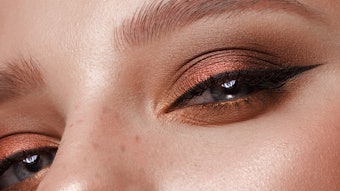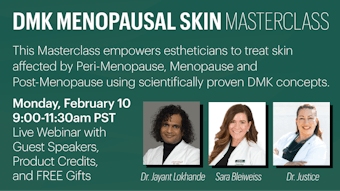
Author’s note: Please refer to “Combining Laser Treatments and Esthetics” in the June 2010 issue of Skin Inc. magazine for more detailed information about the particular lasers and what esthetic treatments can be incorporated with them.
Lasers are an important component of a cosmetic medical practice. They treat many skin conditions, such as hyperpigmentation, acne, telangiectasias, aging skin and many other conditions that are not easily treated by typical facial treatments. Patient education on pre- and post-laser care will optimize results and increase retail sales. These tips are designed to assist the esthetician in properly caring for patients’ skin. It is important to note that in this article the word “patient” is used because a medical professional is performing the actual treatments. The esthetician in this scenario is assisting the treating physician and educating the patient about skin care.
Pigmentation disorders
Patients with pigmentation disorders, such as solar keratosis, photodamage, post-inflammatory hyperpigmentation and melasma, can achieve significantly better results if they take care of their skin at home. Most pigment disorders can be treated easily with visible light laser or intense pulsed light (IPL), except in the case of melasma. There has been success treating melasma with fractionated erbium laser treatments and other modalities, although several treatments are typically needed.
When treating patients with pigment disorders, home care is critical. Topical agents containing pigment-lighteners should be used at home for four to six weeks before treatment with continued use until the desired outcome is reached. Some popular pigment-lightening ingredients include hydroquinone, which many professionals consider to be the most effective pigment-lightener on the market; however, sensitivities may occur when using it. If a patient develops sensitivity or is looking for alternative treatments, the ingredients kojic acid, azelaic acid, licorice root and arbutin, as well as many others, can be used with good results. These ingredients work by suppressing the activity of the melanocytes, which are the cells in the skin that produce pigmentation to protect it from irritation, inflammation, acne, hormonal conditions and photodamage. Those with darker skin have more active melanocytes; therefore it is an absolute necessity to pretreat Fitzpatrick Skin Types IV–VI so the risk of complications is decreased. Along with pigment-lighteners, sunscreen is an absolute must. If the proper sunscreen is not used before and after treatments, patients increase their chances of undoing the results they have obtained or increasing their existing pigmentation.
Rosacea or vascular issues
For patients with rosacea or vascular issues, IPL or visible light lasers are the most effective treatments. Light therapies are attracted to color and cannot differentiate between tanned skin and target colors; therefore, patients must use a topical broad-spectrum sunscreen before and after treatments. Zinc oxide is often preferred because it is a physical sunscreen with anti-inflammatory properties. Topical vitamin C and vitamin K could also be used to achieve favorable results. Vitamin K decreases the pooling of blood under the skin commonly associated with telangiectasias, and vitamin C has been shown to strengthen capillary walls, therefore decreasing the chances of further damage. Care for these patients is simple compared to other skin conditions that are treated with lasers. Always remember, less is more with these skin types. It is imperative to educate the patient about the importance of wearing sunscreen on a daily basis and about ways to avoid further damage. The patient should also be aware of triggers that will cause breakouts.
Mature skin
Mature skin that is characterized by fine lines, wrinkles or increased laxity benefit most from ablative laser treatments. One of the most popular and effective treatments available today is the fractionated carbon dioxide (CO2) laser. Care for the patient’s skin after treatment with the CO2 laser is critical, because it can affect the healing process and the results. Patients should be prepped with pigment-lighteners before and after these treatments in order to prevent the possibility of adverse reactions, such as hypopigmentation and hyperpigmentation. The patient must also be taught the importance of keeping the skin occluded with an ointment recommended by the treating physician. Along with a gentle cleanser, this ointment is the only product that should be used for the first four to five days following a deep ablative laser treatment.
The main purpose of these treatments is to create a wound response in the skin so more collagen will be produced. If the skin doesn’t have a healthy environment to generate this collagen, patients may not achieve optimal results and it can increase the likelihood of complications. The skin heals best in a moist environment; therefore, after the initial healing period, hydrating agents including hyaluronic acid and emollient moisturizers should be used. Peptide-rich products may also be applied to aid in the rebuilding process.
Fractional nonablative lasers are considered to be a more progressive treatment, meaning they will need multiple treatments to attain results similar to the CO2 laser. They are ideal for those who desire a shorter and less extreme healing period than that associated with CO2 lasers. The esthetician’s role in this treatment is similar to ablative laser treatments, although the care is much less intense. The patient will generally use an occlusive agent for one to two days, as opposed to the four to five days that are recommended with CO2 laser.
Acne
Lasers may also be used in the treatment of acne, which occurs because oil glands are stimulated to produce more sebum. In addition to this overproduction of sebum, dead skin cells accumulate in the excess oil. This excess buildup of skin cells and oil acts as a breeding ground for Propionibacterium acnes, which is the bacterium that causes acne. Laser light in the red to blue spectrum may be effective at killing this bacteria and decreasing the inflammation associated with it.1 The laser works not by heat, but by activating a protein to destroy P. acnes and the surrounding inflamed acne lesions. Lasers alone or photodynamic therapy, a process where lasers are used in conjunction with a topically applied solution, have proven highly successful. Photodynamic therapy utilizes a topical drug called aminolevulinic acid to photosensitize the P. acnes, making them more susceptible to laser light. Proper product use during this treatment is essential. Gentle cleansers, sunscreens containing zinc oxide and hydrating agents, such as hyaluronic acid and vitamin B-5, should be used.
Erbium laser treatments are also successful for patients experiencing acne grades I and II, consisting of only blackheads and whiteheads with no inflammation. The erbium laser is used to remove superficial dead skin cells and un-roof, or open, lesions. A series of these treatments at a low setting is recommended for quick results with little downtime. In addition, a salicylic acid-based lotion will boost these results; it causes the outer layer of the skin to slough off extra dead skin cells. Recommending proper products for home care can make a significant difference in a patient’s outcome.
A vital role
The skin care specialist plays a vital role when working with a physician during these services. It is important to not only have the patient’s skin prepped properly, but also to care for the skin after these treatments. Along with any medical treatment, using the wrong products will not only hinder the results, but can also cause serious complications. Education is the key to achieve the best outcome, and the ultimate gratification comes when satisfied patients obtain their desired results.
REFERENCE
1. E Shnitkind, E Yaping, S Geen, AR Shalita and WL Lee, Anti-inflammatory properties of narrow-band blue light, J Drugs Dermatol 5 605–610 (2006)
Terri Wojak is a licensed esthetician with more than 14 years of experience and has knowledge of all aspects of the skin care industry, including education, sales, medical aesthetics, management and ownership. She is the director, as well as an educator, at True University Esthetics in Chicago. Terri is the author of Aesthetics Exposed: Mastering Skin Care in a Medical Setting and Beyond.










